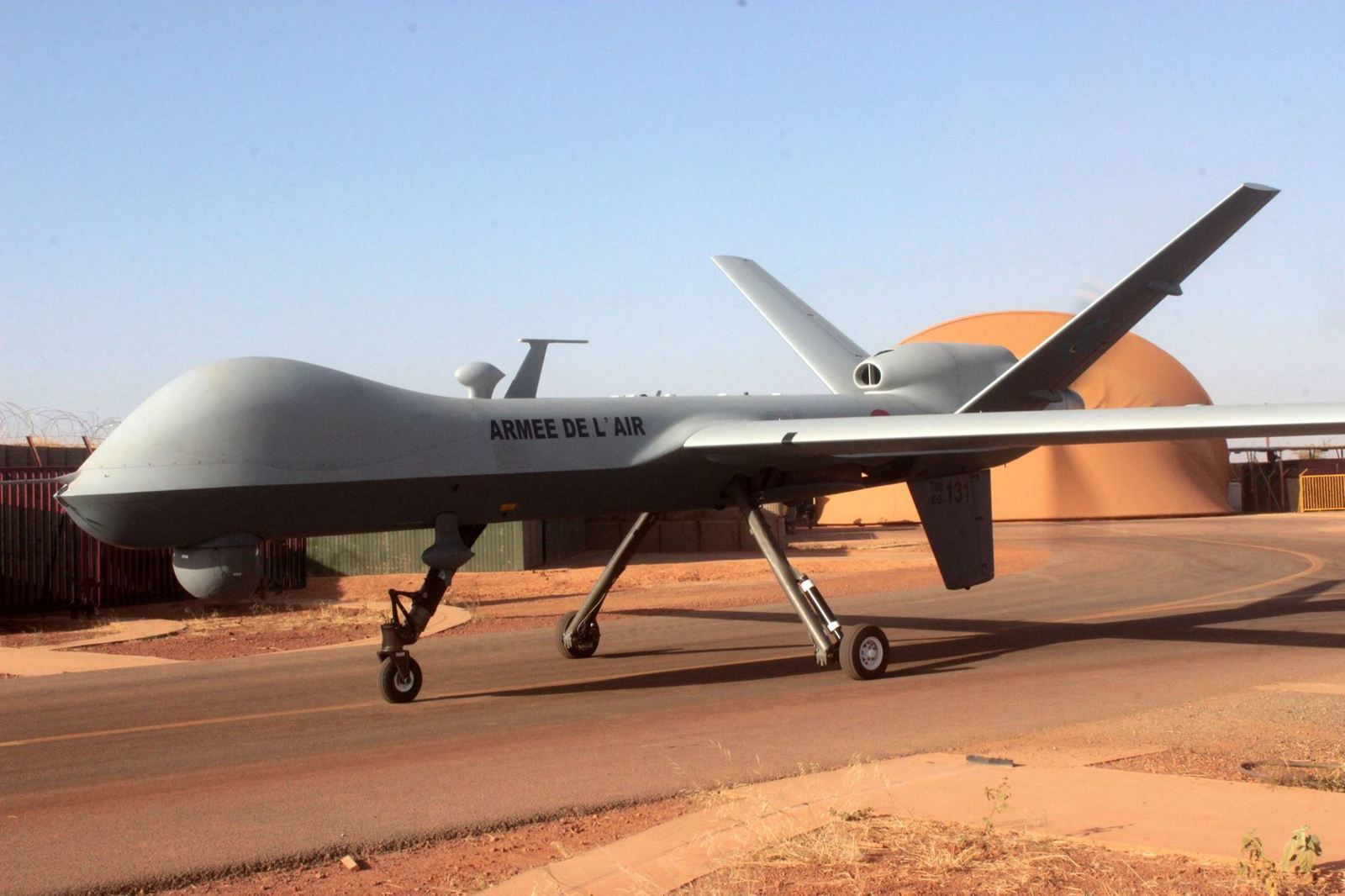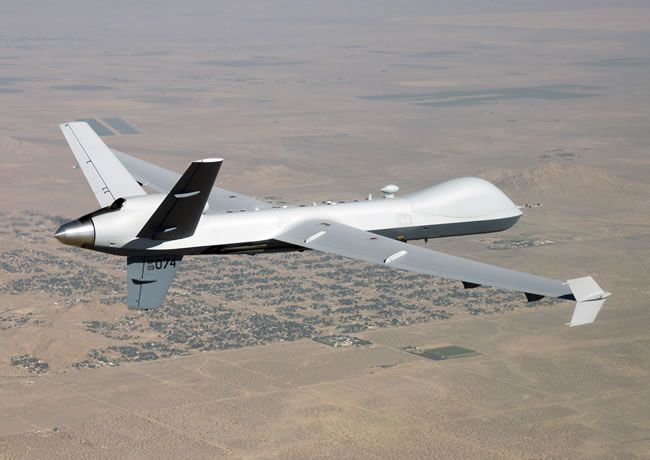Nov. 16, 2014 - By PIERRE TRAN – Defense News
PARIS — During last week’s NATO Industry Forum, a sharp contrast emerged between a wish for simple allied access to command-and-control (C2) information, and the high-tech capabilities in the pipeline for US forces.
The Nov. 13 forum — hosted by French Air Force Gen. Jean-Paul Palomeros, head of NATO’s Allied Command Transformation, and Patrick Auroy, NATO assistant secretary general in charge of defense investment — aimed to increase cooperation with industry to improve alliance readiness and capabilities.
“I am a strong believer that industry can also contribute for a great part to the answer [of readiness],” Palomeros told the audience. “Indeed, you are experts in achieving readiness as it is a daily business for you. Your DNA, if I may use this expression, compels you to constantly adapt, prepare, posture for emerging or changing markets and to keep a sufficient leading edge against competitors.”
During remarks at the forum, held in Split, Croatia, a European admiral clearly stated the difficulties of the small allied nations such as Portugal to get C2 information in the 28-strong alliance.
“We know inside NATO we have big countries with big industries behind them,” said Vice Adm. Fernando Pires da Cunha, joint operational commander for Portugal.
Separately, NATO has completed system testing of the Air Command and Control System (ACCS), showing the capability to run a network with bases in France, Belgium, Germany and Italy, ThalesRaytheonSystems said in a statement. The tests showed ACCS “is ready to provide NATO with essential interoperability,” said the prime contractor, a joint venture between Thales and Raytheon.
The ACCS is NATO’s large-scale attempt to boost allied interoperability in C2 in the skies over Europe.
Interoperability is a “ground rule” among the small nations on the various national command-and-control systems, Pires da Cunha said. The lack of interoperability is compounded by the various national and NATO secrecy classifications that limit access, he said.
“If you have a guy working with one computer, most of these systems, they are not compatible, you cannot have them working together,” he said. “And to get a common picture is very hard.”
A key allied objective is to arrive at a “compatible and affordable” solution that merges the information, he said.
There is no need for a cyber attack, he said. “We jam ourselves with all these incompatible systems. Cooperation is needed among the 28 to deliver a common picture and common information.”
Common training would mitigate the lack of compatibility, and the Supreme Allied Command for Transformation is pushing to move a training school to Portugal, he said.
High-Tech Vision
Pires da Cunha’s remarks contrasted with the soaring ambitions of a senior US officer’s presentation, devoted to high technology.
The US sees growth in unmanned systems in all domains, and demand for cyber security and directed-energy weapons, said US Adm. Mark Ferguson, commander of Allied Joint Force Command at Naples, Italy.
Electricity generation for lasers would replace powder and ammunition, and force commanders must consider the importance of intelligence from data mining, as hybrid warfare uses social media to attack governments and society, Ferguson said.
There will be greater demand for “information operation,” with conflicts fought through the media and online, he said.
On the ground, investment should be made in infrastructure such as railway stations, airports and seaports, needed to transport personnel, he said. The forces need to respond quickly to new threats, he said.
The Trident Juncture exercise is intended to show a high level of “connectedness” between bases in France, Poland, Spain, the Netherlands and Germany for command and control of air, sea and land forces, he said.
That showed the importance of C2 in the high end of warfare, and a reliance on the electromagnetic spectrum, cyber, satellite communications and high data links, he said.
In major NATO moves, the first site against ballistic missiles will go operational in Romania next year, and a second base will go “online” in Poland in 2018, he said. These bases would work on 10-12 minutes of reaction time, he said.
Better Communication
What the military needs and what industry can offer sparked debate along the lines of which came first: the chicken or the egg?
An executive attendee at the conference said much of the morning session focused on operational aspects while missing the industry issues. Companies need dialogue to know available funding and requirements so they can decide on technology, skills and target countries over five, 10 or 20 years, the executive said.
It is difficult to predict 20 years ahead, said Brig. Gen. Manuel Gimeno, logistic division chief on Spain’s Joint Defense Staff.
NATO is entering a new cycle, investing in the planning process, and is seeking reform, Palomeros said. The alliance is working on a minimum military requirement, which will go to the high level military committee and set a plan for the next five years. That will open doors for the future, he said.
Defining the main strategic needs would be the best tool for industry, Palomeros said. Industry has research and development (R&D), which could interest the services.
Ferguson spoke of Apple R&D engineers talking in the mid-1980s of a live tactile screen, voice control and other technology features that are now available.
“Your best minds and our young operators” could get together and that could “change the way we operate,” he said.
FMS Restrictions?
The issue of US sale of equipment into the European Union through the foreign military sales (FMS) system was a topic of discussion, with the EU’s executive commission said to be working on draft legislation against the FMS regime.
Auroy said there is no single NATO market, as each of the member nations and the European Union handles regulatory control. There may be regret, but that was the way the alliance was built, he said.
The absence of a single defense market makes it hard for industry to invest, as there are three markets — EU, NATO and national — said Christina Balis from consultancy Avascent.
One of the panel speakers, Domingo Ureña Raso, head of military aircraft at Airbus Defence and Space, said the US has a good export tool, namely International Traffic in Arms Regulations, which is wielded as a “hammer” against the competition. In Europe, there are different sets of rules for export, procurement and configuration, and some countries set export restrictions on arms that are built in common, he said.
The US and Europe are fierce competitors, but in defense “we have common rather than divergent issues,” notably a common set of regulations on export, procurement and requirements. On his wish list is an “open border” approach in which European firms could offer equipment in the US, as the US sells in Europe, Ureña Raso said.
Caroline Vandedrinck, vice president for Europe and Central Asia at Sikorsky Aircraft, said FMS is a contracting deal and does not distort competition.
Said a French analyst: “It [FMS] is an asymmetrical feature in the export market. There is a case to be made for putting the US and Europe on equal terms in arms exports, particularly for sales into the European market. This is not protectionist.”
An attendee said there is some “very robust talking to the commission” as it is seen to be constraining EU and NATO nations and moving to adopt a measure harmful to the armed forces. A guidance note is being drafted by the commission for the EU. “They [the commission] are listening,” the attendee said.
An EU directive on defense markets went into effect in 2011, aimed at boosting competition, with the exclusion of government-to-government deals, a French executive said.
That opt out was intended to simplify acquisition of second-hand equipment, but European industry lobbied the commission for clearer legislation. One of the factors was Portugal’s sale of its F-16 fighters to Romania without a competition, the executive said. The commission agreed to draw up a guidance note.
Comment from the commission was not immediately available.
EU foreign affairs chief Catherine Ashton said in a statement on July 24, 2013: “The EU has the ambition to act as a security provider, in its neighborhood and globally, both to protect its own interests and contribute to international peace and security. To be able to do so, we need capabilities.
“And to have capabilities, a sound industrial base is vital.”
Palomeros, in his closing remarks, said he saw an eventual replacement of the NATO fleet of airborne warning and control system (AWACS) aircraft as a means of fostering cooperation between Europe and the US.
“For instance, our nations will have to replace major equipment such as the AWACS fleet within 20 years,” he said. “I definitely call for such a project becoming the spearhead of the trans-Atlantic industrial cooperation, a next milestone in success endeavors similar to ACCS.”
The alliance is keen to tighten relations with industry.
“A closer and more open NATO-industry relationship will benefit us both. We have already made some good progress these past few years in building such a mutually beneficial relationship,” NATO Deputy Secretary General Alexander Vershbow said in opening remarks.
























/image%2F0547456%2Fob_e4e4c1_reaper-2.jpg)
/image%2F0547456%2Fob_a545bf_reaper-3.jpg)









